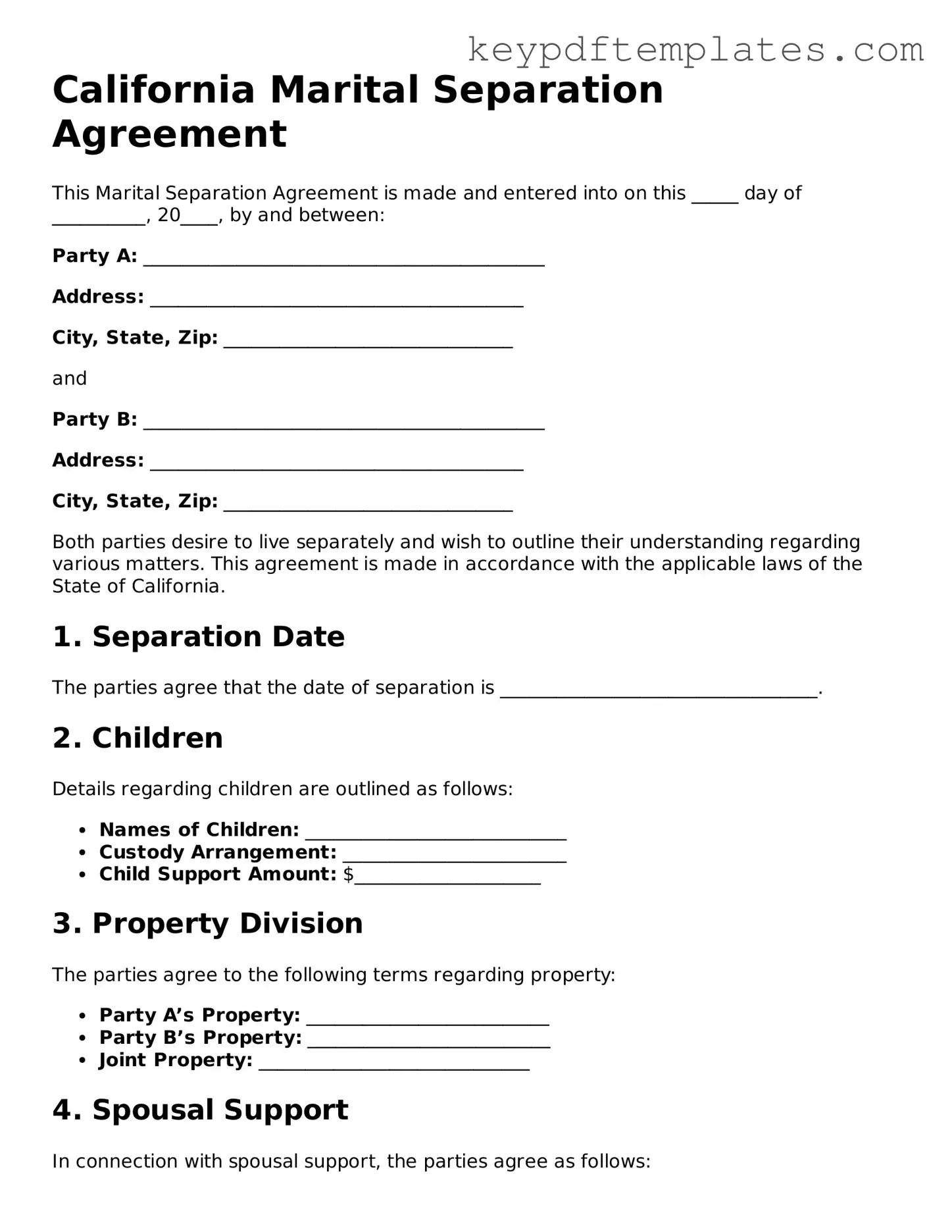Legal Marital Separation Agreement Document for the State of California
A California Marital Separation Agreement form is a legal document that outlines the terms and conditions agreed upon by spouses who wish to live apart while remaining legally married. This agreement addresses key issues such as property division, child custody, and financial responsibilities. By creating this document, couples can establish a clear framework for their separation, helping to minimize conflict and provide clarity during a challenging time.
Modify Document Online
